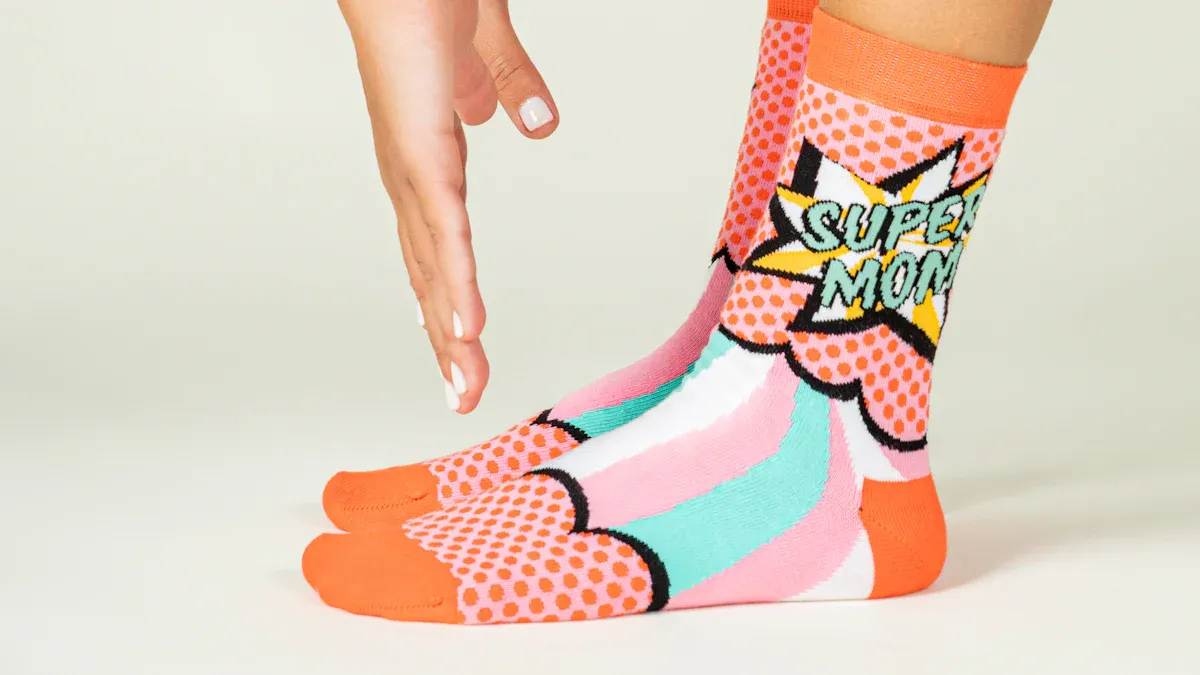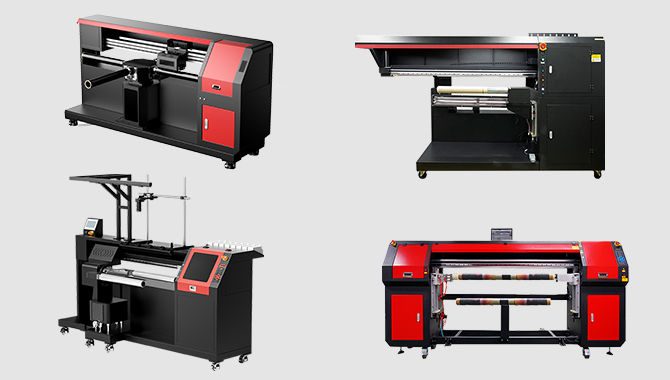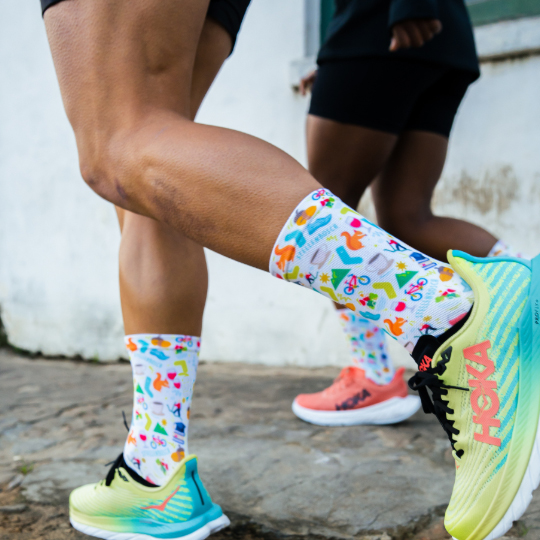
When you pick a Socks Printer Manufacturer, focus on printing technology, material compatibility, production capacity, support, reliability, and pricing. These key factors help you get high-quality socks. You ensure efficient production and strong business growth by making smart choices at the start.
Key Takeaways
- Choose a socks printer manufacturer by checking their printing technology, material compatibility, production capacity, support, and pricing to ensure high-quality socks and smooth business growth.
- Request samples and ask about print quality, lead times, and customer support to avoid surprises and get the best value for your investment.
- Use the provided checklist and ask clear questions to compare manufacturers carefully and pick a reliable partner who can grow with your business.
Key Criteria for Selecting a Socks Printer ManufacturerTechnology Offered
You need to look at the printing technology each Socks Printer Manufacturer provides. Some companies use digital printing, while others use screen or sublimation printing. Each method gives different results. Digital printing can create detailed designs and bright colors. Screen printing works well for simple patterns and large orders. Sublimation printing is best for polyester socks. You should match the technology to your design needs and the types of socks you want to produce.
Tip: Ask the manufacturer for samples. This helps you see the print quality before you make a decision.
Material Compatibility
Not all printers work with every sock material. You should check if the Socks Printer Manufacturer can print on cotton, polyester, or blended fabrics. Some machines only print well on synthetic fibers. Others handle natural fibers better. If you plan to offer many types of socks, choose a manufacturer that supports a wide range of materials.
Here is a quick guide:
| Material | Best Printing Method |
|---|---|
| Cotton | Digital, Screen |
| Polyester | Sublimation, Heat Transfer |
| Blends | Depends on blend ratio |
Production Capacity
Production capacity tells you how many socks the manufacturer can print in a day or week. You need to match this with your business goals. If you want to grow your business, pick a manufacturer that can handle large orders. Small businesses may need lower minimum order quantities. Always ask about lead times and how fast they can deliver your products.
- High capacity means faster turnaround.
- Low minimums help you test new designs.
Support and Reliability
You want a Socks Printer Manufacturer that offers strong support. Good communication helps you solve problems quickly. Reliable companies answer your questions and give updates on your orders. They also help with design files and printing issues. You should look for reviews or ask other customers about their experiences.
Note: Reliable support can save you time and money if something goes wrong.
Pricing and Value
Price matters, but value is more important. You should compare prices from different manufacturers. Look at what is included in the price. Some companies offer free samples or design help. Others charge extra for these services. Make sure you understand the full cost before you order.
- Ask for a detailed price list.
- Check for hidden fees.
- Balance cost with quality and service.
Types of Socks Printing Technologies

Digital Printing (DTG and 360-Degree DTG)
You can use digital printing for detailed designs and bright colors. DTG (Direct-to-Garment) printing puts ink directly onto the sock. 360-degree DTG covers the entire sock, even the sides and heel. This method works well for custom orders and small batches. You get sharp images and smooth gradients.
Tip: Choose DTG if you want to print photos or complex artwork on socks.
Sublimation Printing
Sublimation printing uses heat to transfer dye into polyester socks. You get vibrant colors and long-lasting prints. This method works best for all-over designs. You need socks with high polyester content for the best results.
| Pros | Cons |
|---|---|
| Bright colors | Only for polyester |
| Durable prints | Not for cotton |
Screen Printing
Screen printing pushes ink through a mesh screen onto the sock. You get bold colors and simple patterns. This method suits large orders and basic designs. You save money when you print many socks with the same design.
Heat Transfer Printing
Heat transfer printing uses special paper and heat to apply designs. You can print on different materials. This method works for small runs and custom logos. You get good color but may see some fading after many washes.
Knitting Technologies (Jacquard and Intarsia)
You can choose Jacquard or Intarsia knitting for patterns made with colored yarn. The design becomes part of the sock fabric. You get durable and comfortable socks. This method suits geometric shapes and logos.
Direct-to-Film (DTF) Printing
DTF printing puts ink on a film, then transfers it to the sock with heat. You get flexible designs and strong colors. This method works for many materials and gives you a soft feel.
Note: DTF is a good choice if you want versatility and quick production.
Material Compatibility and Quality Standards

Cotton Socks Printing
You often choose cotton socks for comfort and breathability. Cotton absorbs ink well with digital and screen printing. You get sharp designs and soft textures. Some printers use special pretreatment to help colors stay bright. Always check if the manufacturer can print on 100% cotton or blends with high cotton content.
Tip: Ask for a wash test sample. This helps you see how the print holds up after cleaning.
Polyester and Synthetic Materials
Polyester socks work best with sublimation and heat transfer printing. You get vibrant colors and long-lasting prints. Synthetic fibers resist fading and stretching. Some printers use advanced machines for better results on polyester. You should confirm that the manufacturer uses inks and methods made for synthetic materials.
| Material | Best Printing Method | Durability |
|---|---|---|
| Polyester | Sublimation, Heat Transfer | High |
| Nylon | DTF, Heat Transfer | Medium |
Blended Fabrics
Blended socks mix cotton, polyester, or other fibers. Printing on blends can be tricky. You need to know the blend ratio. Some methods work better with more cotton, while others suit higher polyester content. You should ask the manufacturer for advice on the best printing method for your blend.
- High cotton blends: Use digital or screen printing.
- High polyester blends: Use sublimation or heat transfer.
Quality Assurance Practices
You want your socks to look great and last long. Manufacturers use quality checks to make sure prints stay sharp and colors do not fade. They test for wash durability, color accuracy, and print alignment. You should ask about their quality control steps.
Note: Reliable manufacturers share their testing process and offer guarantees for their products.
Socks Printer Manufacturer Capabilities and CustomizationEquipment and Machinery
You should check what equipment and machinery the Socks Printer Manufacturer uses. Modern machines print faster and give better results. Some manufacturers use advanced digital printers. Others rely on traditional screen printing setups. You can ask for details about the machines. Newer equipment often means sharper images and more color choices. You may want to visit the factory or request photos of the machines.
Tip: Ask if the manufacturer upgrades their equipment regularly. This shows they care about quality and efficiency.
Production Volume Options
You need to know how many socks the manufacturer can produce at one time. Some companies handle large orders for big businesses. Others focus on small batches for custom designs. You should ask about minimum and maximum order sizes. This helps you plan your business and avoid delays. Many manufacturers offer flexible options. You can start with a small order and increase volume as your business grows.
| Order Size | Best For |
|---|---|
| Small batches | New brands, samples |
| Large volumes | Established businesses |
Custom Design Support
You want a Socks Printer Manufacturer that helps with custom designs. Some companies offer design services. Others let you upload your own artwork. You should ask if they provide templates or design advice. Good support makes it easier to create unique socks. You can also check if they offer proofing before production. This step helps you catch mistakes early.
Note: Strong design support leads to better products and happier customers.
Support, Communication, and CollaborationFile Requirements and Proofing
You need to prepare your design files before sending them to the Socks Printer Manufacturer. Most companies ask for files in specific formats like PNG, AI, or PDF. High-resolution images help you get clear prints. Some manufacturers provide templates to guide you. Always check their file requirements. You should also ask for a digital proof. This preview lets you see how your design will look on the sock. You can catch mistakes early and avoid costly errors.
Tip: Save your design files in multiple formats. This makes it easier to meet different requirements.
Customer Service and Responsiveness
Good customer service helps you solve problems fast. You want a manufacturer who answers your questions quickly. Look for companies that offer support by email, phone, or chat. Fast responses show that the company values your business. You should read reviews or ask other customers about their experiences. Reliable support can make your project run smoothly.
Collaboration Process
A smooth collaboration process helps you get the socks you want. You should ask the manufacturer about their workflow. Many companies guide you from design to delivery. Some offer feedback on your designs. Others help you choose the best printing method. Clear steps and regular updates keep you informed. You stay in control of your order and avoid surprises.
Note: Strong communication builds trust and leads to better results.
Pricing, Turnaround, and ScalabilityCost Structure and Transparency
You need to understand how much your socks will cost before you place an order. A good Socks Printer Manufacturer gives you a clear price list. You should see all costs, such as setup fees, printing charges, and shipping. Some companies offer discounts for large orders. Others may charge extra for rush jobs or special designs.
Tip: Always ask for a written quote. This helps you avoid hidden fees.
Here is what you should look for in a price quote:
- Itemized costs for each service
- Minimum order requirements
- Extra charges for custom work
Lead Times and Delivery
Fast delivery helps you keep your business running smoothly. You should ask how long it takes to print and ship your socks. Some manufacturers finish orders in a few days. Others need more time for large or complex jobs. Reliable companies give you a delivery schedule and update you if anything changes.
| Order Size | Typical Lead Time |
|---|---|
| Small batch | 5-7 days |
| Large order | 2-4 weeks |
Note: Always plan ahead to avoid delays.
Scalability for Growth
Your business may grow over time. You need a manufacturer who can handle bigger orders as you expand. Some companies offer flexible production options. You can start small and increase your order size later. Ask if the manufacturer can add new designs or handle more orders during busy seasons.
- Choose a partner who supports your growth.
- Look for companies with extra machines or staff for large projects.
Real-World Examples and Case StudiesSuccess Stories
You can learn a lot from real businesses that chose the right socks printer manufacturer. For example, a small sportswear brand wanted to launch a line of custom team socks. The owner picked a manufacturer with strong digital printing technology and fast turnaround times. The company offered design support and clear communication. The brand received high-quality samples and placed a larger order. Sales increased because the socks looked great and arrived on time.
Another example comes from a startup that focused on eco-friendly cotton socks. The founder chose a manufacturer with experience in printing on natural fibers. The manufacturer used water-based inks and followed strict quality checks. Customers loved the soft feel and bright colors. The startup built a loyal customer base and expanded its product line.
Tip: Always ask for samples before placing a big order. Samples help you check print quality and material feel.
Lessons Learned
You should watch out for common mistakes when choosing a socks printer manufacturer. Some brands picked the lowest price but got poor print quality or late deliveries. Others did not check material compatibility and ended up with faded designs after washing.
Here are key lessons:
- Test print quality with samples.
- Check if the manufacturer can handle your materials.
- Ask about lead times and support.
- Read reviews from other customers.
You can avoid problems by following these steps. Careful research leads to better results and happier customers.
How to Evaluate and Compare Socks Printer ManufacturersChecklist for Assessment
You want to make sure you choose the best Socks Printer Manufacturer for your needs. Use this checklist to guide your decision:
- Review print quality samples.
- Check material compatibility.
- Confirm production capacity matches your goals.
- Ask about support and customer service.
- Compare pricing and value.
- Look for clear lead times and delivery options.
- Assess customization and design support.
Tip: Mark each item as you review manufacturers. This helps you stay organized and avoid missing important details.
Questions to Ask
Prepare a list of questions before you contact any manufacturer. These questions help you learn more about their capabilities:
- What printing technologies do you offer?
- Can you print on cotton, polyester, and blended fabrics?
- What is your minimum and maximum order size?
- How do you handle design proofing and file requirements?
- What is your average turnaround time?
- Do you provide quality assurance or guarantees?
You get better results when you ask clear questions. Write down the answers for easy comparison.
Red Flags to Watch Out For
Watch for warning signs when you evaluate a Socks Printer Manufacturer. These red flags can signal future problems:
| Red Flag | What It Means |
|---|---|
| Poor communication | Delays or misunderstandings |
| Hidden fees | Unexpected costs |
| No samples available | Risk of low print quality |
| Vague lead times | Possible late deliveries |
| Limited material support | Fewer product options |
Note: If you spot any of these issues, consider looking for another manufacturer.
To choose the right Socks Printer Manufacturer, review technology, material compatibility, production capacity, support, and pricing. Use the checklist to compare options.
Tip: Careful evaluation helps you avoid mistakes and get the best results for your business.
FAQ
What is the best printing method for cotton socks?
You get sharp designs with digital or screen printing.
| Method | Result |
|---|---|
| Digital | Detailed |
| Screen | Bold |
How can you check print quality before ordering?
You should request samples from the manufacturer.
Tip: Always wash the sample to see if the colors stay bright.
What is the usual minimum order size for custom socks?
Most manufacturers require at least 50 to 100 pairs.
- Small brands start with lower quantities.
- Large businesses order more for better pricing.
Media Contact
Company Name: Ningbo Haishu Colorido Digital Technology Co., Ltd.
Email: Send Email
Phone: +86 13967852601
Country: China
Website: https://www.coloridoprinting.com/
